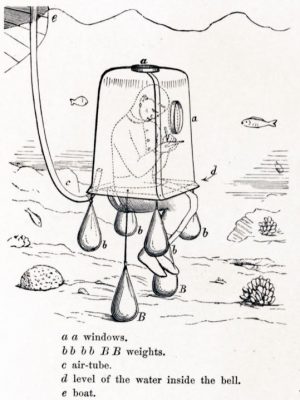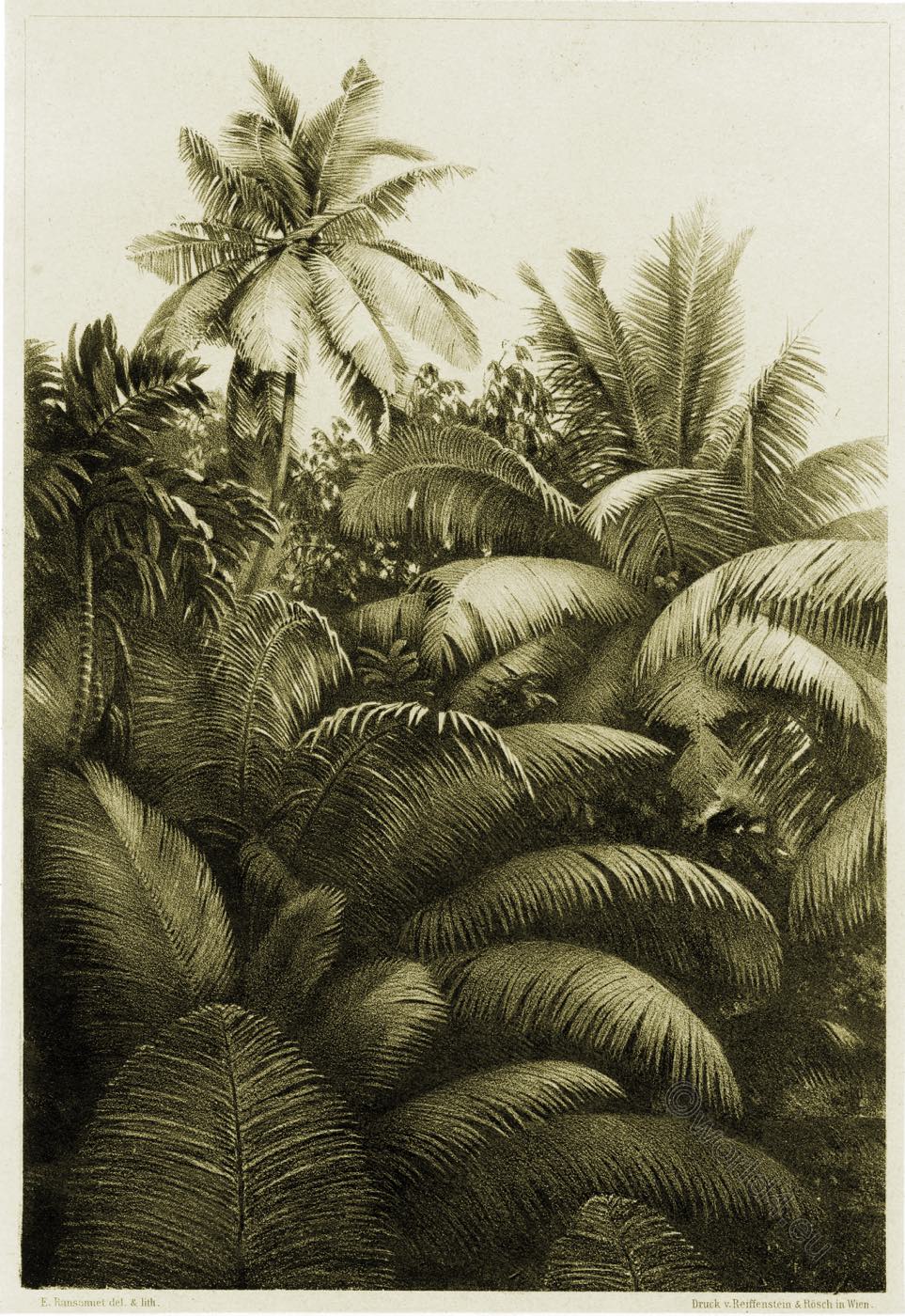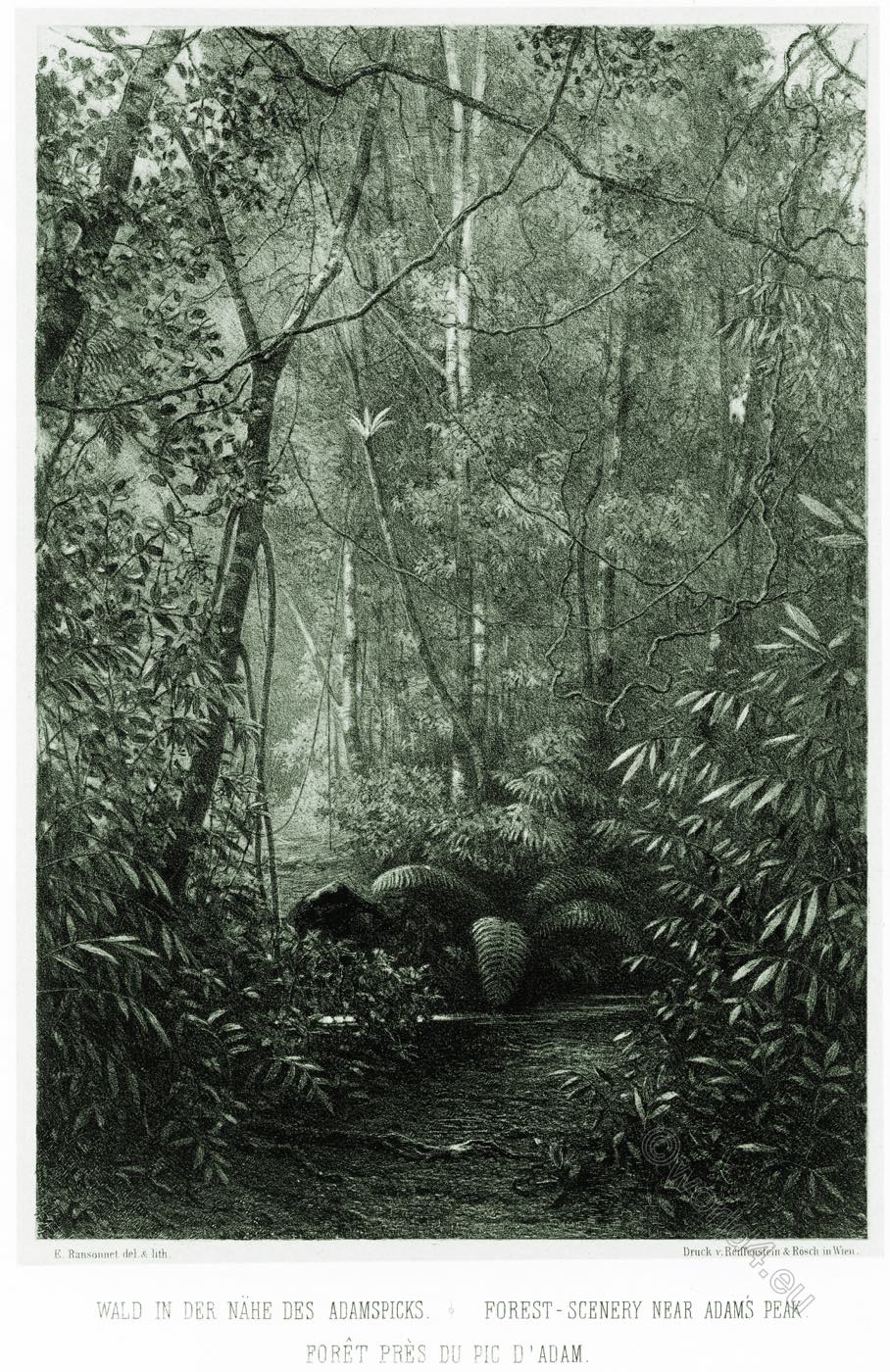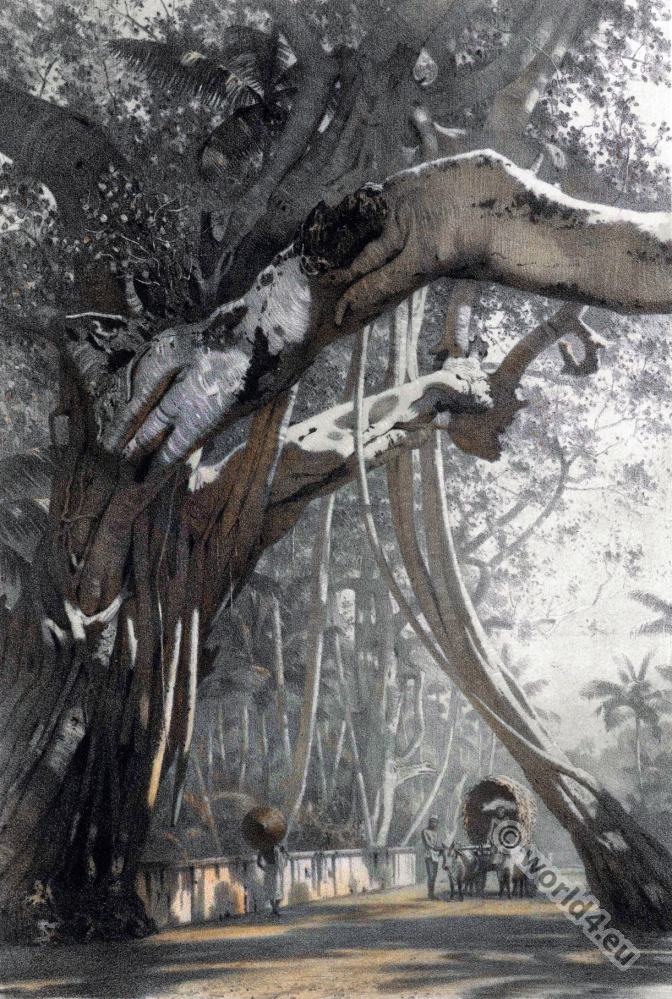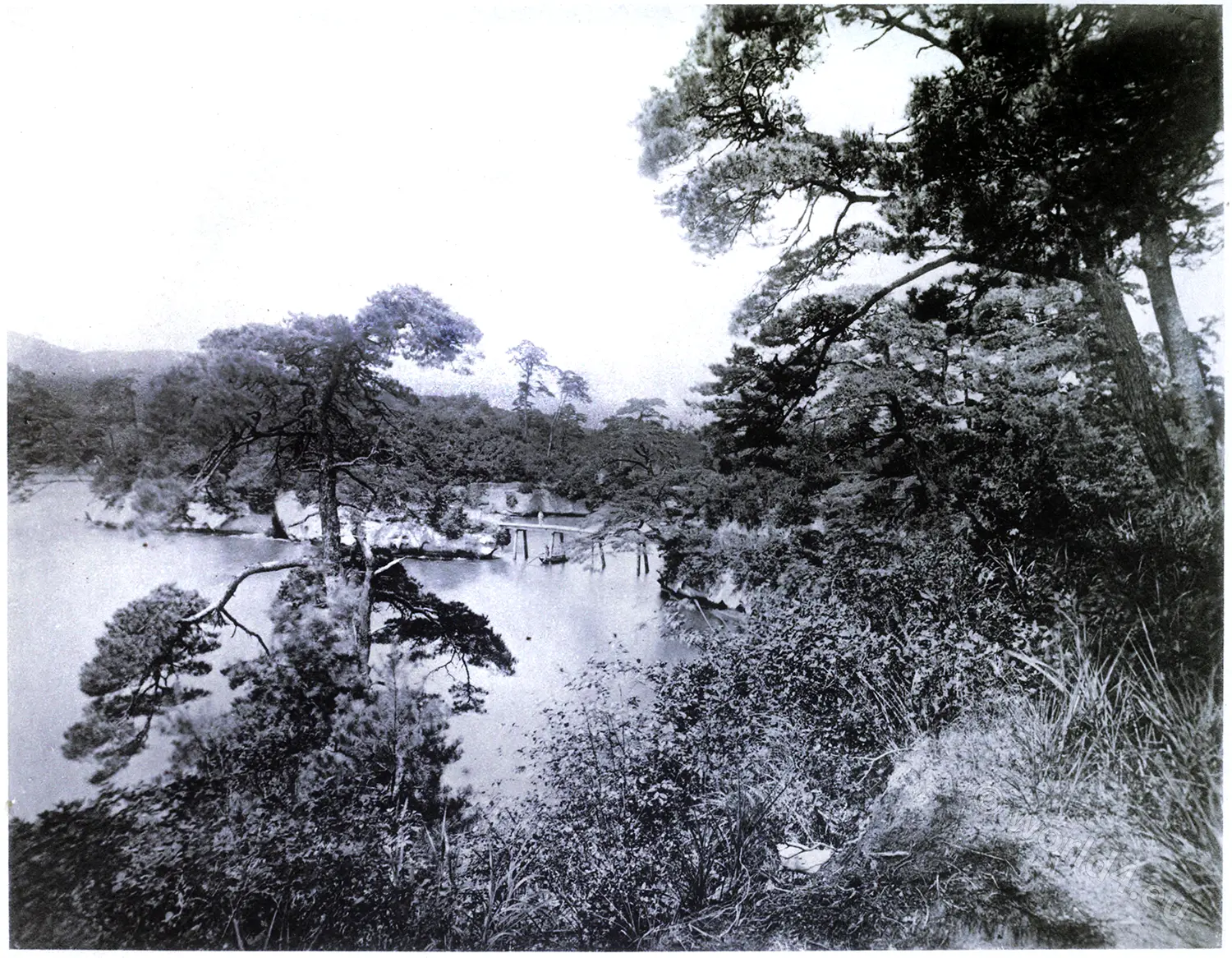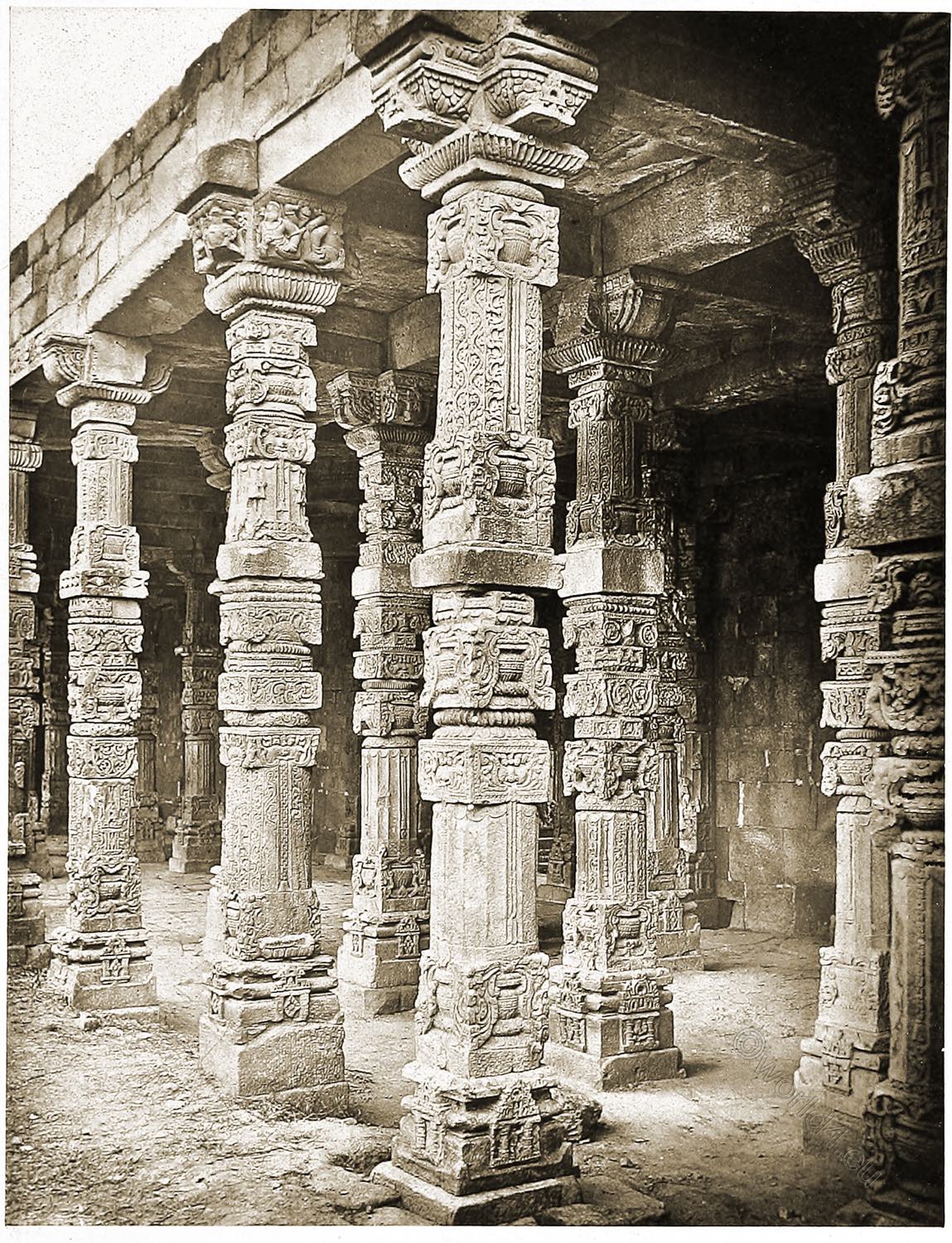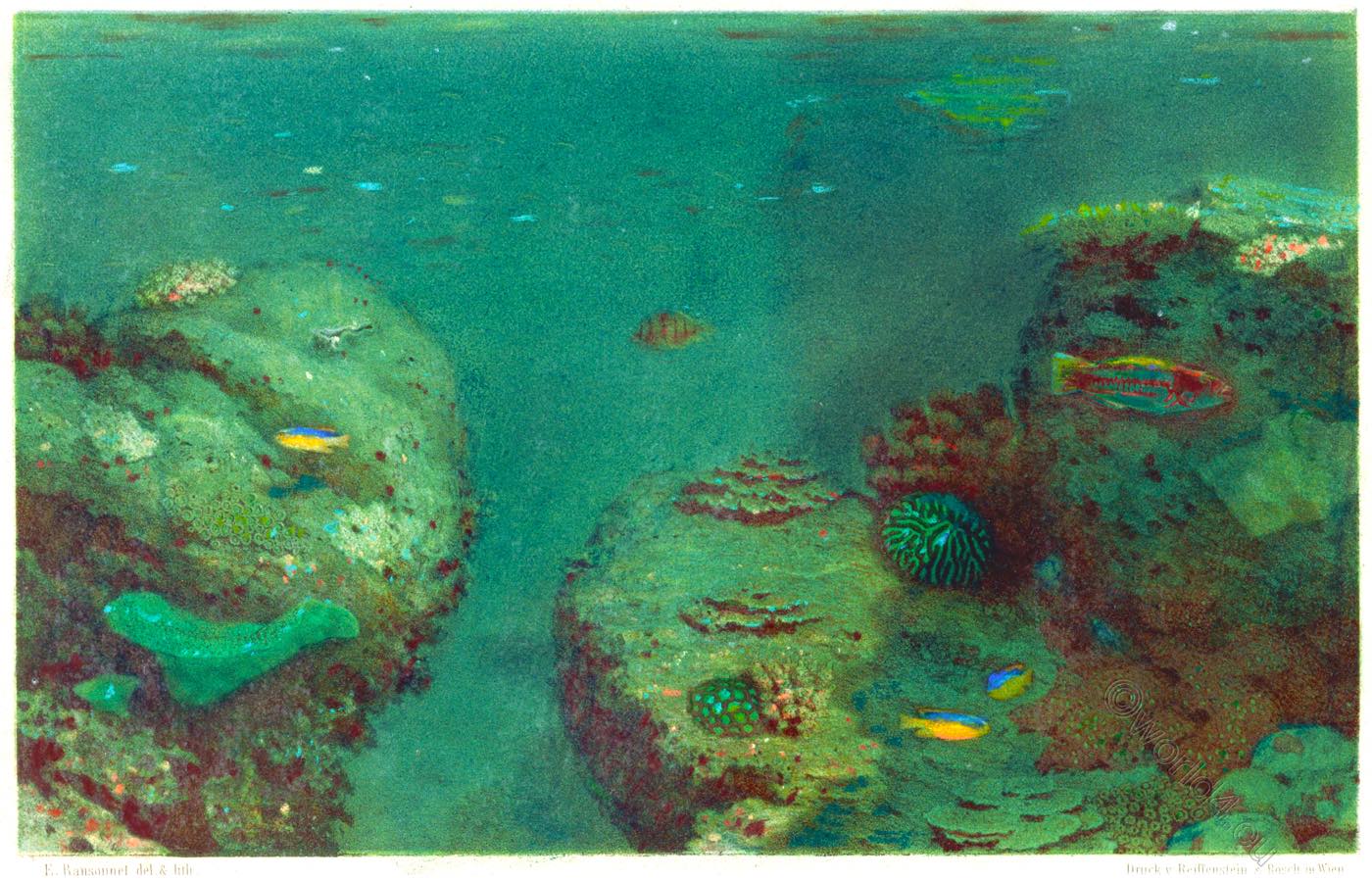
PLATE VII.
Submarine Rocks with green Corals.
Although it was my original intention to confine myself merely to the description of the plates, still I thought, that the reader might find it desirable to have some information with respect to the submarine views and to the contrivance adopted for the purpose of taking them.
In order to be enabled to observe the life existing in the sea as well as in an aquarium and to make sketches of submarine landscapes, I constructed a small diving bell of plate iron, 3 feet high by 2½ a in width.
Besides a smaller window of plate-glass at the top for the admission of light, a second one of 8 inches in diameter was made in front, which allowed the diver to gaze freely into the depth of the water. For my accommodation when sketching, a movable iron bar was fastened below.
The weight of seven Cwts were requisite to submerge the bell almost totally under the level of the water. Then the diver entered the bell and by means of lines, which were fastened to a couple of weights lying on the bottom of the sea, he was enabled to lower his machine as far down as he thought proper.
The bottom being now reached, the diver found himself in the position to move forward in any direction by simply raising the weights BB, while the boat with the air-pump followed in his wake.
In many instances the bell was merely submerged in one or two fathoms of water and kept floating in the same position by long ropes fastened to the adjoining rocks.
It may seem odd to use a diving bell in such shallow water, but those who have been under the surface of the waves and observed the great difference of distinctness, picturesque effect and even of the form of any tiling seen under water in any other way, will form a different opinion.
The difficulties thrown in the way of the diver and artist by currents and waves even in shallow water, are of themselves considerable and only such a simple apparatus, as I made use of, could be employed in a country, where one has wholly to depend upon the Coolies for assistance.
The beauty of the submarine scenery is perhaps nowhere greater than in moderate depth and far more sketches, than I have been able to take here, would not be sufficient to give more than an imperfect idea of its great variety.
The general effect of this species of scenery in respect to colour, is of course very different from that resulting from the appearance of our own landscapes, the prevailing hue under water being a more or less bluish or yellowish green, by which the colours of the objects are very much altered, particularly when situated at some distance.
Red appears always dull and is impossible to be distinguished at a short distance. Yellow and even blue are changed, except in the foreground, into a somewhat of a greenish hue, while green itself is of an astonishing brilliancy and even becomes comparatively brighter at a remote distance. White also remains visible, when far removed from the eye, but then thoroughly assumes the green hue of the water.
a a windows,
bb bb BB weights.
c air-tube.
d level of the water inside the bell.
e boat.
Bright colours assume to a certain extent the greenish hue of the sea, whereas dark ones present an opposite effect. The shades and dark coloured objects (green ones excepted) gradually present a more or less reddish or brownish tinge, which is always complementary to that of the water.
The first submarine view presents a few rocks off the coast opposite Galle, where many green corals are growing.
Nothing can equal the brilliancy of these emeralds of the spa, whose convex surfaces sometimes are impressed with a variety of brown patterns (Maeandrina and Astraea). The Turbinaria pettata M. Edw. is distinguished by its graceful, cup-like shape and uniform green colour, which, wonderful to say, passes into a dull grey when roughly handled.
On the highest parts of the rocks a delicate Pocillopora of an exquisite rose color and with minute greenish polypes, forms a peculiar contrast to the vivid green of some flat Heteropores while another species of the same tribe (Pocillopora verrucosa) is tenanted by large polypes of a brownish hue.
A kind of Montipora of a similar color expands its brittle forms not unlike certain fungi, and yellow flexible Aleyonia grow on the vertical sides of the rocks, which covered by numerous Zo an thus with green disks.
Varied fish enliven these curious places: dark clouds of sardines (Sardinella Neohowii) appear from time to time suddenly between the cliffs, and the bright yellow and blue Glyphisodon Brownriggii is continually searching in the numerous holes of the rocks. The Acanthurus Triostegus and the beautiful red and green parrotfish (Julis quadricolor) also haunt the rocky coast.
Source: Sketches of the inhabitants, animal life and vegetation in the lowlands and high mountains of Ceylon. As well as of the submarine scenery near the coast taken from a diving bell by the Baron Eugène de Ransonnet (Eugen Freiherr von Ransonnet-Villez, 1838 in Hietzing bei Wien; † 28. Juni 1926 in Nußdorf am Attersee). Printed for the author by Gerold & sold by Robert Hardwicke, London 1867.
Related
Discover more from World4 Costume Culture History
Subscribe to get the latest posts sent to your email.

